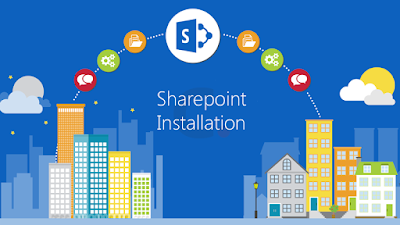 A SharePoint farm can be hosted in a cloud, in a company's private data center or across multiple data centers in different locations. This allows dispersed employees to connect to a unified SharePoint Intranet and collaborate on shared calendars, documents and more.Servers in a SharePoint Farm make up the back-end infrastructure, which supports SharePoint features, including collaboration, uploading files, tracking tasks and managing content.
A SharePoint farm can be hosted in a cloud, in a company's private data center or across multiple data centers in different locations. This allows dispersed employees to connect to a unified SharePoint Intranet and collaborate on shared calendars, documents and more.Servers in a SharePoint Farm make up the back-end infrastructure, which supports SharePoint features, including collaboration, uploading files, tracking tasks and managing content.
Traditional SharePoint farms are made up of application servers, database servers and web servers. A small SharePoint server farm often includes a Microsoft SQL Server database server and one or more servers running Internet Information Services and Office SharePoint Server. In this scenario, the front-end servers are configured as web servers and application servers to serve up content to users over the internet. The application server provides Office SharePoint Server services.
A large SharePoint server farm might include two or more database servers, a number of front-end web servers that run Office SharePoint Server and two or more application servers to run Office SharePoint Server. In this setup, each application server provides Office SharePoint services, and the front-end servers provide web content.
SharePoint farm topology
Up through SharePoint 2013, keeping the server deployment simple was crucial. There were three main roles for servers that factored into a SharePoint farm topology: web server, application server and database server. The web servers were servers to which end users could connect. The applications server runs various services across the server to help optimize the architecture of the farm. The database server role runs the SQL Server services for across the farm.
Within a farm, there are several services that run on one or more servers. The ability of multiple servers to work in conjunction and provide redundancy is important in the cloud, especially for large data centers. One value of such a system is its failover capabilities -- if any server is incapacitated, another one can take over for it. The servers can also provide readily available backups that can scale to immense sizes.
These services provide basic functionality for SharePoint and regulate which services should run on which servers, in an effort to manage the impact on overall farm architecture and performance.
With the introduction of SharePoint 2016 and SharePoint Online, updates to SharePoint include MinRole, which is an alternative to traditional farm topologies. With MinRole, the role of the server is defined within the farm, and, therefore, the server runs only specific services and nothing else, allowing it to function more effectively.
Single farm vs. multi-farm
There are occasions when multiple SharePoint farms make sense. An enterprise might have a quality-assurance (QA) farm, for example, that is separate from a production farm. Geographically dispersed enterprises might have a farm in Europe, one in the Asia-Pacific region and another in North America. When different departments within an organization have differing polices regarding customization and SharePoint support, it makes sense to have separate farms. It is then possible for the enterprise to replicate or share services as needed.
SharePoint farm administrator role and responsibilities
A SharePoint administrator is responsible for the installation, configuration, maintenance, management and software upgrades of SharePoint farms. They must also configure service applications, maintain and manage the content databases.
The SharePoint admin can promote user adoption, develop a governance plan, negotiate service-level agreements, enforce ownership of applications, test backups and collaborate with developers. Other key responsibilities can include assigning proper permission levels, use of PowerShell and configuring applications.
System Requirements
Hardware requirements
- Hard disk storage: Minimum 80 GB
- RAM: 8 GB for small deployments
- 16 GB for medium deployments
- Processor: X64 based pcs with 4 core and 8 core CPU
Software requirements
- Database
Microsoft SQL Server 2012(64 bit)
Microsoft SQL Server 2008 R2 Service Pack 1 - Operating system
Windows server 2008 R2 (Standard, Enterprise) 64 bit edition SP1
Windows server 2012 (Standard, Datacenter) 64 bit edition - Prerequisite for installing Microsoft SharePoint products.
- Application Server role
- Microsoft .NET Framework version 4.5
- SQL Server 2008 R2 SP1 Native Client
- Microsoft WCF Data Services 5.0
- Microsoft Information Protection and Control Client (MSIPC)
- Microsoft Sync Framework Runtime v1.0 SP1 (x64)
- Windows Management Framework 3.0 which includes Windows PowerShell 3.0(Server 2008 R2 Installation)
- Windows Identity Foundation (WIF) 1.0 and Microsoft Identity Extensions (previously named WIF 1.1)
- Windows Server AppFabric
- Cumulative Update Package 1 for Microsoft AppFabric 1.1 for Windows Server (KB 2671763)


